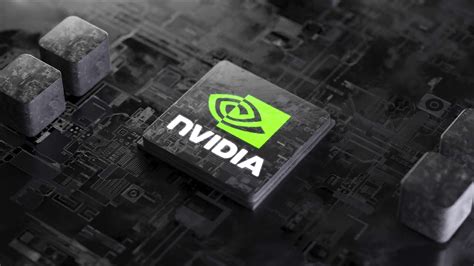
Nvidia’s stock presents a compelling, albeit risky, long-term investment opportunity, according to a recent analysis that suggests purchasing shares today could potentially pave the way to substantial wealth accumulation over several decades. However, this hinges on the company maintaining its dominant position in key growth sectors like artificial intelligence (AI), data centers, and gaming, amid fierce competition and the cyclical nature of the semiconductor industry.
Nvidia (NVDA), currently trading at a premium reflecting its growth prospects, faces the challenge of justifying its valuation. One analyst believes that while there is no guarantee of success, Nvidia’s current trajectory and strategic positioning make it a potentially transformative investment for those with a long-term perspective.
The core argument for Nvidia’s long-term potential rests on its leadership in the AI revolution. The company’s GPUs (Graphics Processing Units) are essential for training and deploying AI models, making it a crucial player in this rapidly expanding field. As AI adoption continues to grow across various industries, the demand for Nvidia’s products is expected to remain strong. Data centers, which power cloud computing and AI applications, are another key market for Nvidia. The company’s data center GPUs are used for high-performance computing, deep learning, and data analytics.
Gaming, Nvidia’s historical stronghold, remains a significant revenue driver. Despite fluctuations in the gaming market, Nvidia’s GeForce GPUs are widely recognized for their performance and features. The company continues to innovate in this space, introducing new technologies like ray tracing and AI-powered upscaling to enhance the gaming experience.
However, the path to “a lifetime of riches” is not without its obstacles. The semiconductor industry is known for its cyclical nature, with periods of high demand followed by periods of oversupply. Nvidia’s revenue and earnings can be affected by these cycles. Competition is another major challenge. Nvidia faces intense competition from other chipmakers, including Advanced Micro Devices (AMD), Intel, and various emerging players. These companies are investing heavily in AI and data center technologies, and they could potentially challenge Nvidia’s dominance.
The article stresses that any investment in Nvidia should be considered a long-term bet, requiring patience and a tolerance for volatility. The stock’s price can fluctuate significantly in the short term due to market conditions, investor sentiment, and company-specific news. Investors should be prepared to hold the stock for many years, if not decades, to potentially realize its full potential.
In-Depth Analysis of Nvidia’s Potential
Nvidia’s ascendancy to market dominance is rooted in its prescient shift towards parallel processing architectures, a design perfectly suited for the computationally intensive demands of graphics rendering and, later, artificial intelligence. Initially, the company carved its niche in the gaming industry, where its GeForce GPUs became synonymous with high-performance graphics. However, Nvidia’s foresight allowed it to adapt its GPU technology for use in scientific computing, data analytics, and, most notably, deep learning.
The company’s CUDA (Compute Unified Device Architecture) platform played a pivotal role in democratizing access to GPU-accelerated computing. CUDA provided developers with a relatively easy-to-use environment for programming GPUs, enabling them to harness the massive parallel processing power for a wide range of applications. This, in turn, spurred the development of AI algorithms and models that were previously computationally infeasible.
Nvidia’s strategic investments in AI research and development further solidified its position as a leader in the field. The company has collaborated with leading universities and research institutions, contributing to the advancement of AI technology. Its acquisition of Mellanox Technologies in 2020 strengthened its data center capabilities, providing high-speed networking solutions that are essential for AI training and inference.
The demand for Nvidia’s GPUs is driven by several factors, including the increasing adoption of AI across various industries, the growth of cloud computing, and the expanding use of data analytics. AI is being used in applications such as image recognition, natural language processing, autonomous driving, and drug discovery. Cloud computing providers rely on Nvidia’s GPUs to power their AI services. Data analytics is used by businesses to gain insights from large datasets, and Nvidia’s GPUs accelerate the processing of these datasets.
Despite its strengths, Nvidia faces several challenges. The semiconductor industry is subject to cyclical fluctuations in demand, which can impact Nvidia’s revenue and earnings. The company also faces intense competition from other chipmakers, including AMD, Intel, and emerging players such as Graphcore and Cerebras Systems. These companies are investing heavily in AI and data center technologies, and they could potentially challenge Nvidia’s dominance. Furthermore, geopolitical tensions and trade restrictions could disrupt Nvidia’s supply chain and access to key markets.
Nvidia’s Financial Performance and Valuation
Nvidia’s financial performance has been impressive in recent years, driven by strong growth in its data center and gaming segments. The company’s revenue has increased significantly, and its profitability has remained high. However, Nvidia’s stock is currently trading at a premium, reflecting its growth prospects. The company’s price-to-earnings (P/E) ratio is significantly higher than the average P/E ratio for the semiconductor industry.
Investors are betting that Nvidia can continue to grow its revenue and earnings at a rapid pace. This depends on several factors, including the continued adoption of AI, the growth of cloud computing, and Nvidia’s ability to maintain its competitive advantage. If Nvidia can successfully execute its strategy, its stock could continue to appreciate in value. However, if the company fails to meet expectations, its stock could decline significantly.
The analysis underscores that an investment in Nvidia is not without risk and requires a long-term investment horizon. The stock’s volatility necessitates a strong risk tolerance and the understanding that short-term market fluctuations are inevitable.
Key Market Segments and Growth Drivers
- Data Center: Nvidia’s data center business is driven by the increasing demand for AI training and inference, high-performance computing, and data analytics. The company’s data center GPUs are used by cloud computing providers, research institutions, and enterprises.
- Gaming: Nvidia’s gaming business is driven by the demand for high-performance graphics cards. The company’s GeForce GPUs are popular among gamers for their performance and features. Nvidia is also investing in cloud gaming, which allows users to stream games to their devices.
- Automotive: Nvidia is developing autonomous driving platforms for automakers. The company’s DRIVE platform is used for self-driving cars, trucks, and buses. Nvidia is also working with automakers to develop advanced driver-assistance systems (ADAS).
- Professional Visualization: Nvidia’s professional visualization business is focused on providing GPUs for workstations and servers used by professionals in fields such as design, engineering, and media and entertainment.
Competition and Market Dynamics
Nvidia faces intense competition from other chipmakers, including:
- Advanced Micro Devices (AMD): AMD is a major competitor in the gaming and data center markets. The company’s GPUs and CPUs are used in PCs, gaming consoles, and servers.
- Intel: Intel is the largest chipmaker in the world. The company is investing heavily in AI and data center technologies. Intel’s CPUs and GPUs are used in PCs, servers, and embedded systems.
- Emerging Players: Several emerging players are developing AI chips, including Graphcore, Cerebras Systems, and Habana Labs (owned by Intel). These companies are focused on developing specialized chips for specific AI workloads.
The semiconductor industry is subject to cyclical fluctuations in demand, which can impact Nvidia’s revenue and earnings. The industry is also characterized by rapid technological change, which requires companies to constantly innovate to maintain their competitive advantage.
Geopolitical Considerations
Geopolitical tensions and trade restrictions could disrupt Nvidia’s supply chain and access to key markets. The company relies on suppliers in various countries for components and manufacturing services. Trade restrictions could limit Nvidia’s ability to sell its products in certain markets.
Strategic Considerations for Investors
Investors considering an investment in Nvidia should carefully evaluate the company’s prospects and risks. They should also consider their own investment goals and risk tolerance. A long-term investment horizon is recommended, as Nvidia’s stock is likely to be volatile in the short term.
Management’s Perspective
Nvidia’s management team is confident in the company’s ability to continue to grow its revenue and earnings. The company is investing heavily in research and development to maintain its competitive advantage. Nvidia’s CEO, Jensen Huang, is a charismatic and visionary leader who has been instrumental in the company’s success.
Expert Opinions and Analyst Ratings
Analysts have mixed opinions on Nvidia’s stock. Some analysts believe that the stock is overvalued, while others believe that it has significant upside potential. The average analyst rating for Nvidia is “buy.” Price targets vary widely, reflecting the uncertainty surrounding the company’s future prospects.
Conclusion: A High-Risk, High-Reward Opportunity
Investing in Nvidia presents a compelling opportunity for substantial long-term wealth accumulation, predicated on the company’s continued dominance in pivotal growth sectors such as artificial intelligence, data centers, and gaming. While the potential rewards are significant, investors must acknowledge the inherent risks associated with the semiconductor industry, including cyclical fluctuations in demand, fierce competition, and geopolitical uncertainties. A long-term investment horizon, coupled with a high-risk tolerance, is essential for those seeking to capitalize on Nvidia’s transformative potential. The company’s premium valuation demands sustained execution and innovation to justify investor expectations. Ultimately, the decision to invest in Nvidia hinges on a comprehensive understanding of the company’s strengths, weaknesses, opportunities, and threats, along with a clear articulation of individual investment objectives and risk parameters.
FAQ: Frequently Asked Questions about Nvidia’s Investment Potential
-
Is Nvidia stock a good investment for long-term growth?
Nvidia stock presents a potential for long-term growth, particularly if the company maintains its leadership in AI, data centers, and gaming. However, it is crucial to acknowledge the risks associated with the semiconductor industry, including cyclical demand and intense competition. Potential investors should conduct thorough research and assess their risk tolerance before investing. “The core argument for Nvidia’s long-term potential rests on its leadership in the AI revolution,” but the cyclical nature of the semiconductor industry also has to be considered.
-
What are the main risks associated with investing in Nvidia?
The primary risks include the cyclical nature of the semiconductor industry, which can lead to revenue fluctuations; intense competition from companies like AMD and Intel; and potential disruptions to the supply chain due to geopolitical factors. The high valuation of Nvidia’s stock also poses a risk, as any failure to meet expectations could lead to a significant decline in share price. As stated in the article, “The semiconductor industry is known for its cyclical nature, with periods of high demand followed by periods of oversupply.”
-
How does Nvidia’s dominance in AI contribute to its investment potential?
Nvidia’s GPUs are essential for training and deploying AI models, making it a crucial player in the rapidly expanding AI field. The increasing adoption of AI across various industries is expected to drive strong demand for Nvidia’s products, thus contributing to its growth potential. The company’s CUDA platform has also facilitated the development of AI applications.
-
What is Nvidia’s current valuation, and is it justified?
Nvidia’s stock is currently trading at a premium, reflecting its growth prospects. The company’s price-to-earnings (P/E) ratio is significantly higher than the average for the semiconductor industry. Whether this valuation is justified depends on Nvidia’s ability to continue growing its revenue and earnings at a rapid pace, which depends on factors such as AI adoption, cloud computing growth, and maintaining its competitive advantage.
-
What role does the gaming sector play in Nvidia’s overall business strategy and investment appeal?
Gaming remains a significant revenue driver for Nvidia, with its GeForce GPUs widely recognized for their performance and features. Despite fluctuations in the gaming market, Nvidia continues to innovate in this space, introducing new technologies to enhance the gaming experience. This provides a stable revenue base while the company expands into other growth areas like AI and data centers.









